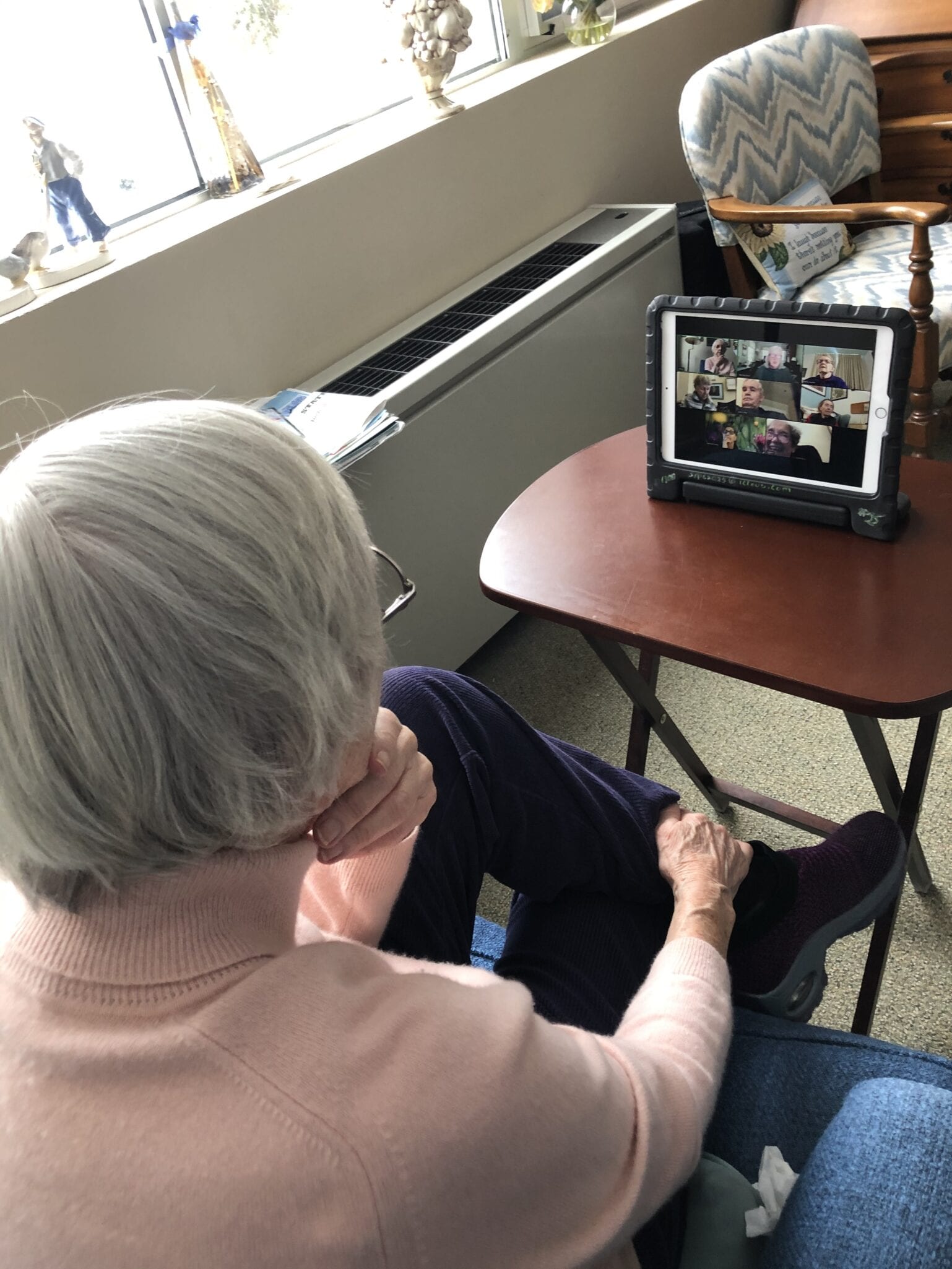Whether you’ve been using technology for years or you are just now gaining familiarity in a pandemic season, we all fall somewhere on a vast technology spectrum that is wide and deep.
And it doesn’t matter where you fall, each new step involves dipping into the unknown in some way, perhaps even some vulnerability or feeling overwhelmed.
The good news is that with a little help and confidence, you can adopt strategies to bust through these barriers and find opportunities you never knew were possible.
Barrier Buster #1: Have a Growth Mindset
It’s easy to stay in our habits and routines. It’s comfortable and safe. But stretching beyond your comfort zone will lead to greater understanding. Even mistakes can be your friend.
And this is especially true when it comes to technology.
Many barriers to technology begin with your own mindset of what you think to be possible or pertinent. No matter your technology experience, a growth mindset can measure how far you’ve come and point the way to new opportunities.
Obstacles become possibilities. Uncertainty becomes certitude. Certitude inspires action. Not because you have all the answers. But because you’re not afraid to try.
A growth mindset has no age limit.
You don’t need to turn your life upside down. You don’t need to be a technology whiz or be like your neighbor (although recommendations and learning together can be fun!). Just look ahead with confidence and take small, forward steps in your own path.
With a growth mindset, you CAN bust through barriers to adopt the technology that supports and enriches the priorities and values you already hold dear.
Barrier Buster #2: Knowledge is Power
A growing demographic of adults over the age of 50 creates “a huge, diverse market for tech,” according to Forbes magazine. Forbes also reports that 91% of American adults aged 50+ have computers, and 80% between the ages of 50 and 64 have smartphones.
With technology use on the rise, so also are security breaches and internet scams targeted to this demographic. Increased compromise of personal information certainly creates a justified barrier to technology.
According to the FBI, “elder fraud,” accounts for $3 billion in loss a year within a growing senior population.
While even the slightest chance of being targeted by an internet scam can be unsettling and certainly not an unfounded concern, you don’t need to turn your back on e-commerce or online services.
While many businesses are adopting greater safety measures to protect consumers under the watch of the Federal Trade Commission, you CAN overcome this technology barrier by arming yourself with up-to-date, expert information to have more power over your online transactions.
Your local police department is an excellent resource for keeping you up-to-date on fraudulent scams and how to protect yourself from them. At McLean, we work with the Simsbury Police Department to teach residents how they can spot a potential scam. (https://www.simsbury-ct.gov/police-emergency/pages/scams)
The official FBI website is another place to find this critical information. The FBI lists current scams and trends, as well as strategies to protect yourself. Common elder fraud schemes include romance, tech support and government impersonation scams.
Knowledge is power. The more you know, the more you can recognize and avert a potential problem. In the words of Benjamin Franklin, “an ounce of protection is worth a pound of cure.”
At the very least, make sure your computer has current anti-virus and protection software from credible suppliers. In addition, the FBI warns against acting upon urgent requests, opening communication from an unknown source, and providing any personal or financial information to unverified people or businesses.
While this may seem like common sense, in the moment, one can easily be caught off guard in an emotional appeal or an urgent request.
Being proactive is just as important when it comes to data privacy on our own devices.
A 2017 AARP survey showed that many adults 50+ do not actively protect their personal data. High priority measures such as passcodes to lock a device or changing passwords every few months on sensitive email or banking accounts could prevent such a breach.
Get ahead of these pitfalls and bust through this technology barrier by arming yourself with good information and best practices!
Barrier Buster #3: Focus on Your Priorities
One significant barrier to technology can be determining value based on technology features rather than benefits of how it relates to your everyday life.
One way to bust through this barrier is to FIRST determine what your values/priorities are. THEN decide about a purchase or what specific platform to pursue. Viewing technology through this lens provides intention and a custom-built path for exploring new opportunity to suit YOUR needs, not adapting your needs to a fancy, new tech tool.
A study published in Science Direct cited aging adults’ desire to perform technology-based activities were “significantly associated with the perceived importance of the activities.”
So, what are your priorities? What do you value?
And how might technology come alongside to support you in that?
Just start with one application that interests you from right where you are. Then move on to the next.
> Familiar with Zoom? Move on to a book or special interest discussion forum. Need assistance downloading the Zoom application on your device and learning how to use it? Link here for a tip sheet to get you started.
> Missing in-person exercise classes? Silver Sneakers provides LIVE online classes and workshops to nurture community and healthy lifestyles.
> Not able or wanting to drive down Main Street for errands? Check out online banking or grocery shopping delivery.
> Needing advice without waiting in the doctor’s office? Many health providers now offer tele-health practitioners to answer questions and provide direction from home.
Now don’t wait for a bill to be due to learn online banking or find you’re out of eggs in the middle of a recipe to shop online! Give yourself plenty of time (and grace!) to learn.
The point is to FIRST identify your areas of value, and THEN decide which pockets of technology can bring new life to something you already care about.
Yes, technology is an ever-changing landscape with layers and barriers that often need to be peeled away.
But by adopting simple strategies, you CAN bust through technology barriers with confidence, greater freedom and opportunities to live your best life.
And if all else fails, call the nearest high school student.
Baron, Jessica. “People Over 50 are Avid Tech Users- So Why are They Ignored?” Forbes. May 12, 2019.
https://www.fbi.gov/scams-and-safety/common-scams-and-crimes/elder-fraud
https://www.pymnts.com/news/security-and-risk/2019/why-online-retail-fraud-is-on-the-rise/
Anderson, G. Oscar. “Technology Use and Attitudes Among Mid-Life and Older Americans.” AARP Research. December 2017.
Vroman, Kerryellen. “Who Over 65 is online? Older Adults’ Dispositions Toward Information Communication Technology. Science Direct. February 2015.
https://www.sciencedirect.com/science/article/abs/pii/S074756321400541X.
https://tools.silversneakers.com/Learn/Live


